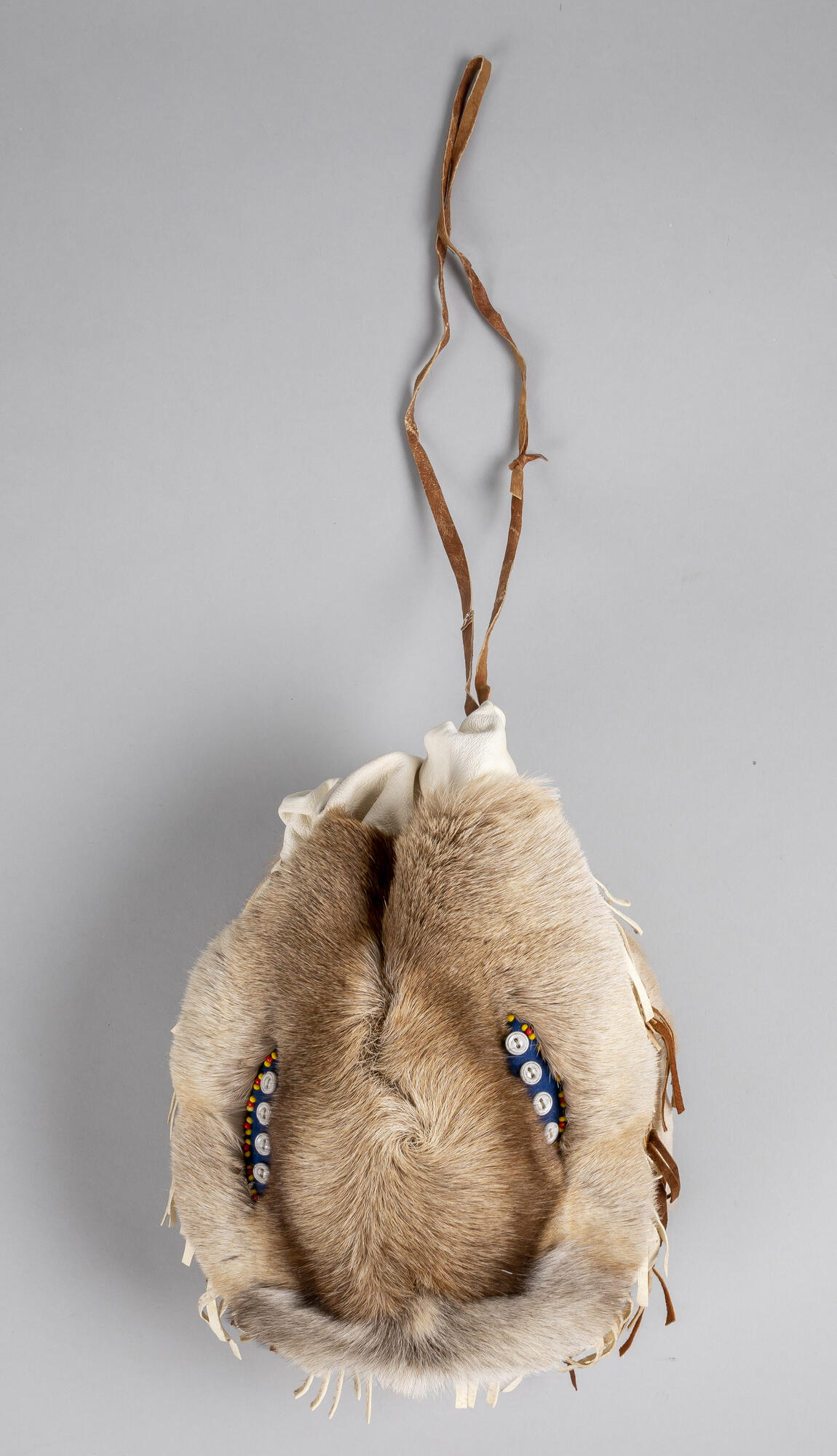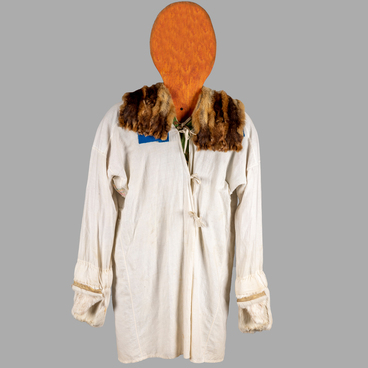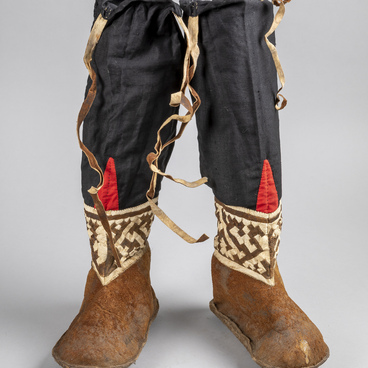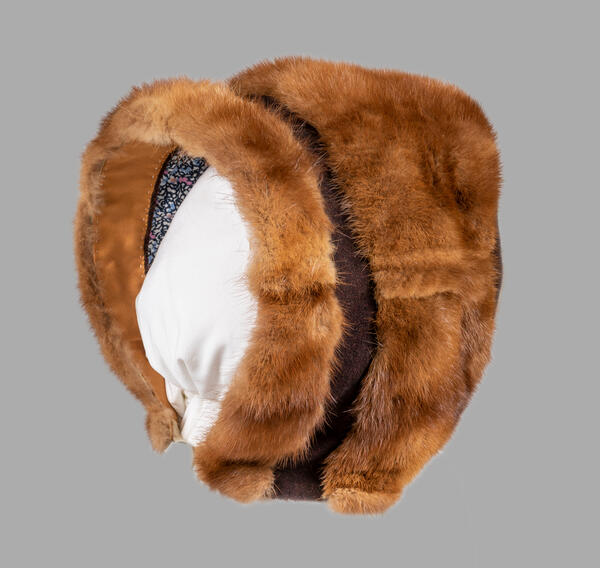Every Khanty woman had a tuchan, which is a bag for handicrafts. Women sewed clothes for the entire family. The bag was used to store pieces of fabric, leather and fur, as well as a needle case, thread, scissors, and beads.
In Khanty culture, a handicraft bag is seen as an essential woman’s item. It is either passed from mother to daughter, or the mother makes a new one for her daughter’s wedding.
Usually tuchan bags are sewn from deer fur. The main parts are of an oval shape and sewn together along the edges with a piece of rovduga (suede made of deer or elk skin) and fur. The opening is tightened with a lace. It is believed that such bags should always be kept tightened, but without a clasp — this way, they will bring good luck and happiness to their owner.
Tuchan bags are decorated with appliques, charms, fringes, fur and leather mosaics, patterns, beads, and metal chains.
There are two main methods of decorating the front side of a tuchan bag. The first method involves decorating it with wide ribbons with linear geometric ornaments. Vertical patterns and stripes are bordered by contrasting strips of fur or, sometimes, patterned ribbons.
The second method relies on decorating the front side of the bag with stylized images. In this case, the side is separated into sections — from one to four — which are similar to the central section of the bag.
There are bags in which the two methods are combined.
Regardless of the decoration method, some bags feature a wide patterned fur ribbon along the extension of the opening. It usually adorns only the front part of the bag but sometimes it runs along the entire bag.
A dye can be used to apply a geometric pattern to the extension of the opening. The selection of patterns is quite diverse: the most common motif of linear and geometric patterns is known by the common name “sable”, and the most common motifs for stylized images are “a cone with a house” and “bear”.
The women’s backpack-type bag presented in the exhibition is sewn from fur taken from two elk heads.







